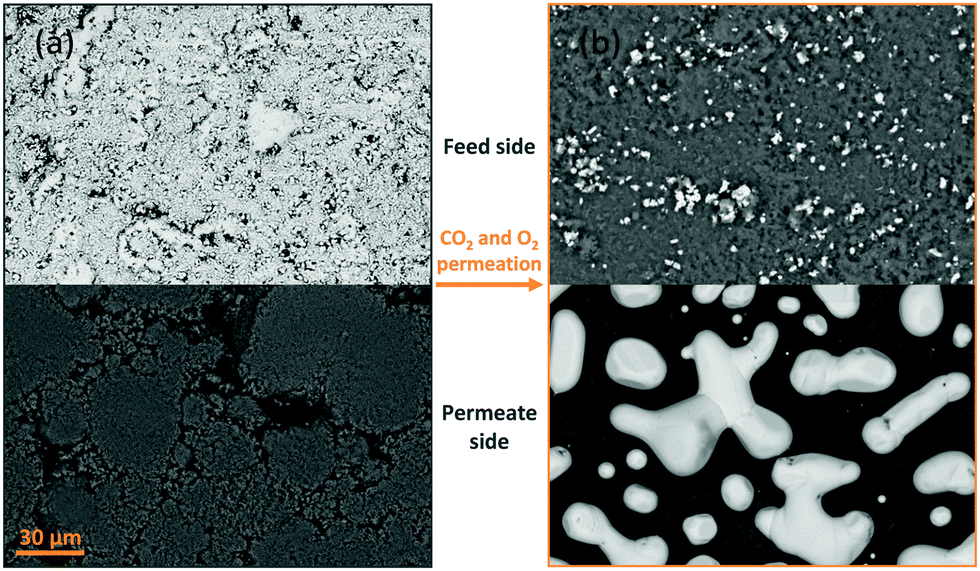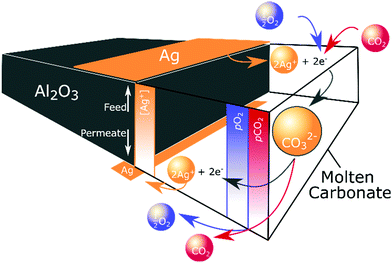CO2 capture filter: A groundbreaking idea for the post-carbon industry
We all know that burning fossil fuels to serve the energy needs of human society is affecting the environment. It increases greenhouse gas emissions, namely CO2, and is causing the Earth to heat up day by day.
But now, a team of British scientists claims they have created silver crystals that can filter CO2 out of the air. The groundbreaking idea was that they would use this filter as a net, capturing every CO2 molecule in the exhaust to give them a chance to release it into the environment.
The recovered CO2 can be utilized to produce plastic, concrete or biofuels. Or simply, scientists can bury them in the ground to carbonate available metal oxides, creating limestone mines that can store CO2 in a more environmentally friendly way.


CO2 capture filter: A groundbreaking idea for the post-carbon industry
The new study, published in Energy & Environmental Science, uses a technique that the authors say no one has ever tried before. They planted a small amount of silver molecules on the air separator membrane and used the same CO2 stream to grow the silver crystals growing on it.
These silver crystals increase the filtration efficiency and capture CO2, which saves a large amount of precious metal. As a result, the cost of creating filters will decrease, making the idea of applying it on an industrial scale more feasible.
" We do not create a filter entirely made of silver," explained Greg Mutch, engineer, research author from the University of Newcastle, UK. "Instead, we only seed a small amount of silver and feed the crystals inside the membrane, which increases the efficiency we want."
Carbon filter and filter for the idea that we can capture and store carbon (Carbon capture and storage (CCS) help reduce or completely eliminate the amount of greenhouse gas emissions that we emit into the environment from public activities. Karma.
A number of industrial CCS projects have been implemented around the world. Typically, the United States currently has about 5,800 km of CO2 pipelines and Norway with 160 km of similar pipelines. The CO2 recovered in these countries is used to pump down exhausted oil fields, reducing the viscosity of the remaining oil and recovering it.

CO2 recovered from thermal power plants is pumped below an exhausted oil field, reducing the viscosity of the remaining oil and recovering it.
In Australia, the country's three largest coal-fired power plants have designed a process of capturing CO2 as input to algae biomass farming systems. This algae is then used to produce plastic and animal feed.
Some other development directions of CCS industry are recovering CO2, burying them underground, containing metal oxide mines such as CaO, MgO to form limestone carbonate. In this state, carbon will be stored more sustainably underground, instead of entering the atmosphere and creating a greenhouse effect.
The science and industry of carbon sequestration and storage has been continuously developed over the past 10 years. However, it still faces a major obstacle that is cost. While scientists have countless ideas about CO2 filters that can capture these emissions, they often fail to deploy them on an industrial scale because the cost and cost are so great.
So in this new study, British scientists have tried to solve the problem. They observed that silver when produced into two-phase films can isolate and separate CO2 from other gases. This membrane acts as a permeable barrier, allowing other gases to diffuse through, except for the trapped CO2.
The thing is, silver is a rare metal so it's not cheap. To overcome this weakness, scientists have tested a breakthrough idea. They created original aluminum oxide filters and only added a small amount of silver molecule.
These silver molecules then automatically grow into thicker lattices, increasing the area exposed to CO2 and increasing the efficiency of the filter. This crystalline process takes place in the flow of air through the membrane.

Silver crystals are grown on the surface of aluminum oxygen film.
"Through unbalanced growth driven by Ag [silver] branch fibers, from a small amount of Ag, low-cost, low-flux film materials have been converted into high-flux membrane materials, but keep costs low, " the authors wrote in the study.
In other words, at a cheaper cost, silver crystal films developed on aluminum oxide have comparable performance to the CO2 capture processes currently in use. " In fact, this system is likely to reduce both the size of the equipment needed and potentially reduce operating costs ," Mitch said.
CO2 capture films are in a big problem called "Carbon neutrality", or carbon neutralization . The concept, introduced in 2006, aims to develop industry with zero CO2 emissions.
To do that, we have to find ways to reduce greenhouse gas emissions or offset emissions by natural methods, such as reforestation, or man-made films like capturing and reusing. CO2.
The goal is to go from a current high carbon emissions industry, to a low carbon industry and then to the post-carbon industry. This is said to be a sustainable solution for both the environment and human society in the future.
You should read it
- Microsoft has committed to a roadmap of 'recovering' CO2 emissions from business operations since 1975
- What is the most devastating natural disaster that the earth has experienced?
- Startled with the harmful effects of solar cells on the environment
- All Logitech gaming products are certified carbon neutral
- Successfully manufactured equipment to capture and separate CO2 from emissions for high efficiency and low cost
- Science warns: Sea levels may rise more than three meters in the future
- This is why Elon Musk wants to conduct a 'nuclear attack' on Mars
- Climate change is causing the sea to flow faster, scientists are still confused about what the harm will be
May be interested
- Should I change the activated carbon of the hood?
 how long does it take for a hood to replace activated carbon. what should be considered when replacing activated carbon for the hood? your questions will be answered in the article below.
how long does it take for a hood to replace activated carbon. what should be considered when replacing activated carbon for the hood? your questions will be answered in the article below. - Working with Network Monitor (Part 4)
 in the previous article of this series, i showed you how to filter the network monitor capture file so that only the communication between the desired servers is displayed. in this part 4, we will introduce you to ha
in the previous article of this series, i showed you how to filter the network monitor capture file so that only the communication between the desired servers is displayed. in this part 4, we will introduce you to ha - What is a capture?
 capture has many different meanings and is used in many fields, including in the field of technology.
capture has many different meanings and is used in many fields, including in the field of technology. - What is activated carbon?
 activated carbon is applied a lot in daily life. so what is activated carbon and the use of activated carbon?
activated carbon is applied a lot in daily life. so what is activated carbon and the use of activated carbon? - Laptop photos with carbon shell weigh less than 1 kg
 this product weighs only 975 grams because it is made of high-quality carbon fiber material, but the disadvantage is the slightly old design.
this product weighs only 975 grams because it is made of high-quality carbon fiber material, but the disadvantage is the slightly old design. - What is a UF filter? Compare UF, RO and Nano water filtration technologies
 the article of tipsmake.com will help you understand what uf filter is and what uf water filtration technology has advantages and disadvantages compared to ro and nano.
the article of tipsmake.com will help you understand what uf filter is and what uf water filtration technology has advantages and disadvantages compared to ro and nano. - Filters You Should Clean and Replace in Your Home
 filters are an integral part of modern homes. they keep you away from pollution and other environmental problems. therefore, you need to replace them periodically.
filters are an integral part of modern homes. they keep you away from pollution and other environmental problems. therefore, you need to replace them periodically. - Discovered a new form of carbon, stronger than metal and more resilient than rubber
 a new form of super-strong, ultra-light, elastic, new carbon structure like rubber, even with the ability to conduct new electricity was discovered by scientists when heating carbon to 1,000 degrees celsius.
a new form of super-strong, ultra-light, elastic, new carbon structure like rubber, even with the ability to conduct new electricity was discovered by scientists when heating carbon to 1,000 degrees celsius. - 26 useful screen capture apps for macOS
 by default, macos has an impressive screen capture capability, but if you need to capture multiple screens, you will begin to notice its limitations. see the following third-party options to expand your screen capture toolkit.
by default, macos has an impressive screen capture capability, but if you need to capture multiple screens, you will begin to notice its limitations. see the following third-party options to expand your screen capture toolkit. - All Logitech gaming products are certified carbon neutral
 all of the swiss-made gaming hardware (logitech gaming) are made from environmentally-friendly materials, along with global carbon neutral certification.
all of the swiss-made gaming hardware (logitech gaming) are made from environmentally-friendly materials, along with global carbon neutral certification.










 China invented something that could replace jet engines
China invented something that could replace jet engines Discover the black hole closest to Earth, located in the star system that we can see with the naked eye
Discover the black hole closest to Earth, located in the star system that we can see with the naked eye This is an AI system that can turn people into animals and vice versa
This is an AI system that can turn people into animals and vice versa Impressive image: ISS International Space Station flies over the Sun.
Impressive image: ISS International Space Station flies over the Sun. Why are cartridges usually made of copper and not steel, lead or aluminum?
Why are cartridges usually made of copper and not steel, lead or aluminum? A series of amazing natural phenomena that you cannot see every day, or never in your life
A series of amazing natural phenomena that you cannot see every day, or never in your life